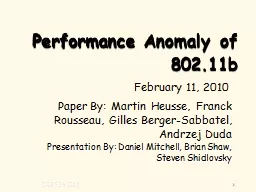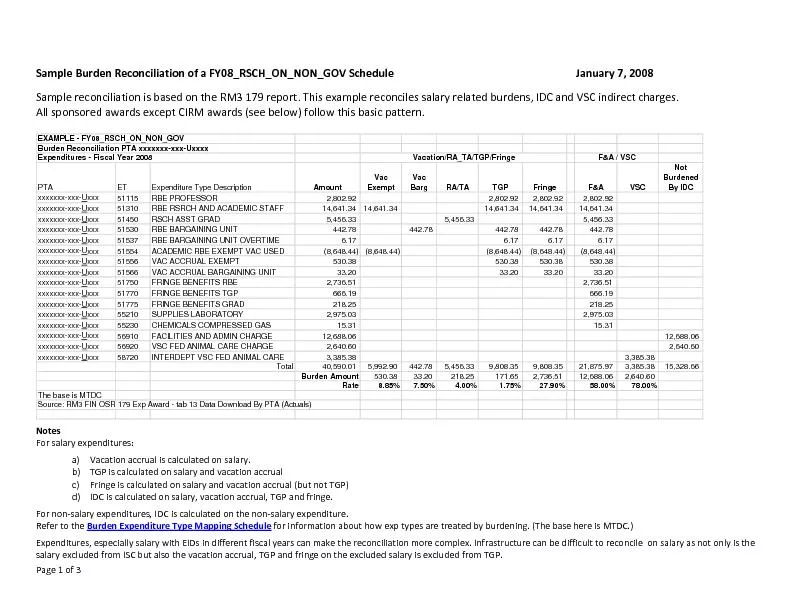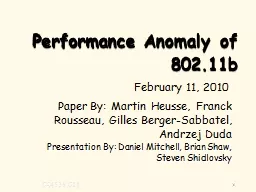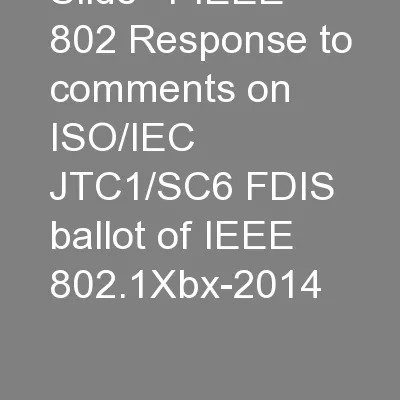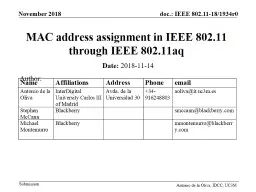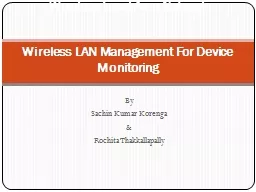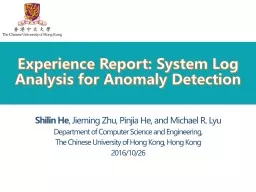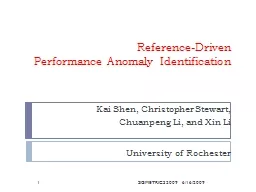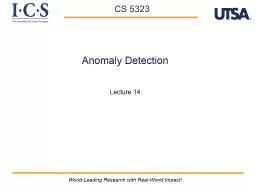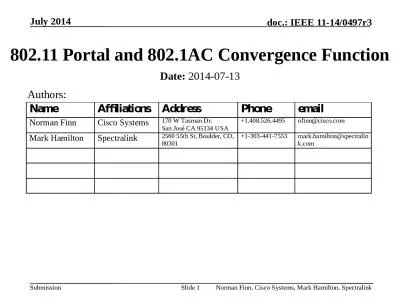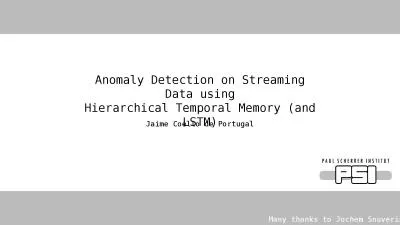PPT-Performance Anomaly of 802.11b
Author : kittie-lecroy | Published Date : 2016-05-07
Presentation By Daniel Mitchell Brian Shaw Steven Shidlovsky Paper By Martin Heusse Franck Rousseau Gilles Berger Sabbatel Andrzej Duda 1 CS4516 C10 February
Presentation Embed Code
Download Presentation
Download Presentation The PPT/PDF document "Performance Anomaly of 802.11b" is the property of its rightful owner. Permission is granted to download and print the materials on this website for personal, non-commercial use only, and to display it on your personal computer provided you do not modify the materials and that you retain all copyright notices contained in the materials. By downloading content from our website, you accept the terms of this agreement.
Performance Anomaly of 802.11b: Transcript
Download Rules Of Document
"Performance Anomaly of 802.11b"The content belongs to its owner. You may download and print it for personal use, without modification, and keep all copyright notices. By downloading, you agree to these terms.
Related Documents

